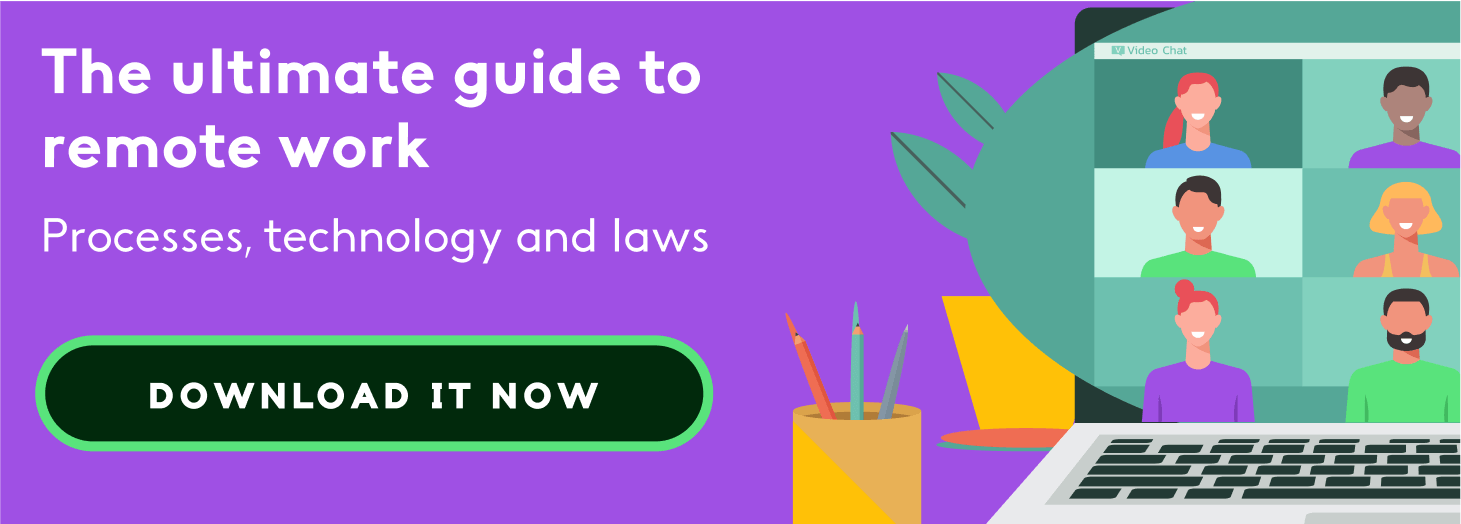How to manage social distancing at your workplace

Within the past few months, many employees have been working remotely due to the Corona crisis. However, with people all across the world slowly resuming their lives, many companies are now facing some serious decisions. Emily Lannon, Head of EU Community Experience at Wayfair, shares her best practices on how to return to the workplace safely and how to manage social distancing.
Everyday life after the lockdown in the Corona crisis is getting back to normal. People go on holidays, enjoy meals in restaurants and are going back to work. By now, many employees have had enough of the solitude and loneliness of remote working. They would prefer to return to their usual office workplaces to chat in person to their colleagues instead of speaking virtually via zoom, Skype and the likes.
The gradual lifting of the lockdown is taking thousands of people back to their offices, workshops and studios. However, there are many of unknowns. Security measures to prevent a new wave of Covid-19 infection are a top priority. Wayfair’s own Head of EU Community Experience Emily Lannon explains what to look out for and gives tips on logistical issues related to Covid-19 workplace preparation to make employees feel secure and ease the returning-to-workplace transition by implementing certain general standards. HR departments have work to do!
Why come back at all?
We are still in the middle of a pandemic and, hence, the safest place for employees to work is still at home. However, some employees have legitimate business or personal needs for why they need to go back to the office.
Those reasons could be:
- Internet and the ability to effectively work from home.
- Mental health and well-being. For example, some people moved to a new city not knowing anyone and feelings of isolation and loneliness might arise. Oftentimes, work is people’s first or only means of contact.
- Physical well-being and actual technical setup are missing.
For companies, it’s vital to set up a contingency plan to manage social distancing at workplaces to make everyone feel safe at work. Let’s take a look at the eight steps of a successful contingency plan.
1. Designing for risk
Humans are social animals. Working remotely makes people miss their friends and colleagues, the possibility of celebrating high fives or hugs in times of distress. To change this instinctual behaviour in an environment employees are familiar with is incredibly difficult.
HR managers should, therefore, design the workplace accordingly so that people won’t act on instincts.
2. Setting up your space for behavioural change
Wayfair has interviewed 820 of their own employees to try to understand how well they work at home and inquire about their needs. As you can see from the graph, a significant number of them are still perfectly happy working at home.
However, when asked about the number one reason why they would want to come back, a whopping 39% said it was for social interaction, so they could see their colleagues, that in many companies become friends. Which, again, is the number one thing that we have to be really careful about to keep people safe.
How do we solve this discrepancy?
3. Have a plan
As always, having a plan and following through is the most important thing. Confusion is your worst enemy and biggest challenge right now.
- Identify the key people who are strategic to your plan and build up your team.
- Identify what measures and steps you need to take when creating your plan to welcome people back safely to their workplace.
- Communication is key!
4. Start with the basics
We are all adults in the workplace environment - well, we all have our off-days 😉 - and putting a little trust in the way your employees behave can go a long way. However, make sure that you provide your employees with some basic information before they get anywhere near the office, including:
- everyone must stick to one-and-a-half metre social distancing
- social interactions must be kept to an absolute minimum
- everyone should wear masks whenever they’re interacting with people
- proper hand hygiene is the number one way to stay safe
- use touchless time and attendance systems to clock-in and clock-out
- Train your employees how to work efficiently from home. This could also include hiring and onboarding remotely as well as using the corresponding tools such as meetings features.
- Use as many digital channels and tools as possible, to ensure that many employees can stay home and work remotely. You will now discover whether you have invested enough in a digital workplace.
5. The three phases of desk setup
On the more practical, operational side of office setup, remember to set up your employees’ desks in accordance with social distancing guidelines.
Phase 1: one-directional seating:
To ensure social distancing at workplaces in the first phase, Wayfair mapped out CAD plans where each desk has the required 1,5 metre social distancing. Desks will also face the same direction to ensure better airflow for individuals. In general, not everyone will want to come back to the office immediately. Use this to your advantage and spread your employees throughout the building.
Phase 2: staggered days:
As the crisis continues to stabilise, more and more people will eventually return to their workplace. Companies will then stagger their desks, so that everyone is still facing the same direction, but spread across different days of the week. Some people will work Mondays and Wednesdays in the office, others Tuesdays and Thursdays, for example.
Phase 3: 1,5 staggered face-to-face desks:
The staggered desks have employees facing each other at a social distance of 1,5 metre, but with acrylic dividers between the desks help to prevent the spread of germs. With this model you get a much higher occupancy, which is important in the later phases of the Corona crisis.
Source: Wayfair
6. Setting up your space for social distancing at workplaces
Cordon off all the places where people naturally stop by to have a chat. People can still get their food and drinks, but they should be served individually and handed out.
Remove any touch and chat points such as coffee machines, cupboards, utensil drawers, rubbish bins, water taps in the kitchen.
Also, keep people moving and discourage socialising by placing indicators on pathways and waiting zones, so employees know where to stand and what to do. For example, in an elevator, the best and safest way to stand is actually facing the walls.
Have you ever faced the wall of an elevator without feeling totally weird? We didn’t think so. Hanging up cool, replaceable posters in the elevator such as trivia questions, games and puzzles is a fun way to visually remind people to not face the direction in which everyone is breathing.
7. Encouraging a split
If you do the maths, keeping a 1,5 metre social distance space between each desk allows only a fraction of employees to work simultaneously in the office to keep potential exposures as low as possible. Until government guidance changes, a split is the only way to keep the numbers low. You can do this following these two actions:
- Split: those working from home and those working from the office.
- Split: those working from the office - separating your teams and their friends among the floors at work.
8. Building a Contingency Plan
Right now, we don’t know what’s going to happen in the future. Making sure that you’re prepared for a range of potential scenarios is the best approach to face the unknown.
Has your company already successfully tackled social distancing in the workplace? Keep your options to aid a smoother transition, open in case there are additional waves to come. Communicate and educate your employees so that they understand the reasons behind decisions.
Also, people often struggle with uncertainty. Using language that prepares them for a possible return to remote working helps them to stay calm and get ready. Educate people about the sources of information you are using as a basis for your decision-making.
The safest way to lift a lockdown
The safest way to stay safe in a global pandemic would undoubtedly be to play it cool and stay home - full time. This isn’t very realistic, however, as no one knows how long this pandemic is going to last. Viruses don’t just miraculously disappear. Therefore it’s super important that we all work together, sticking to a combination of precautions and accepting that social distancing is the new social norm in workplaces and everywhere else.

